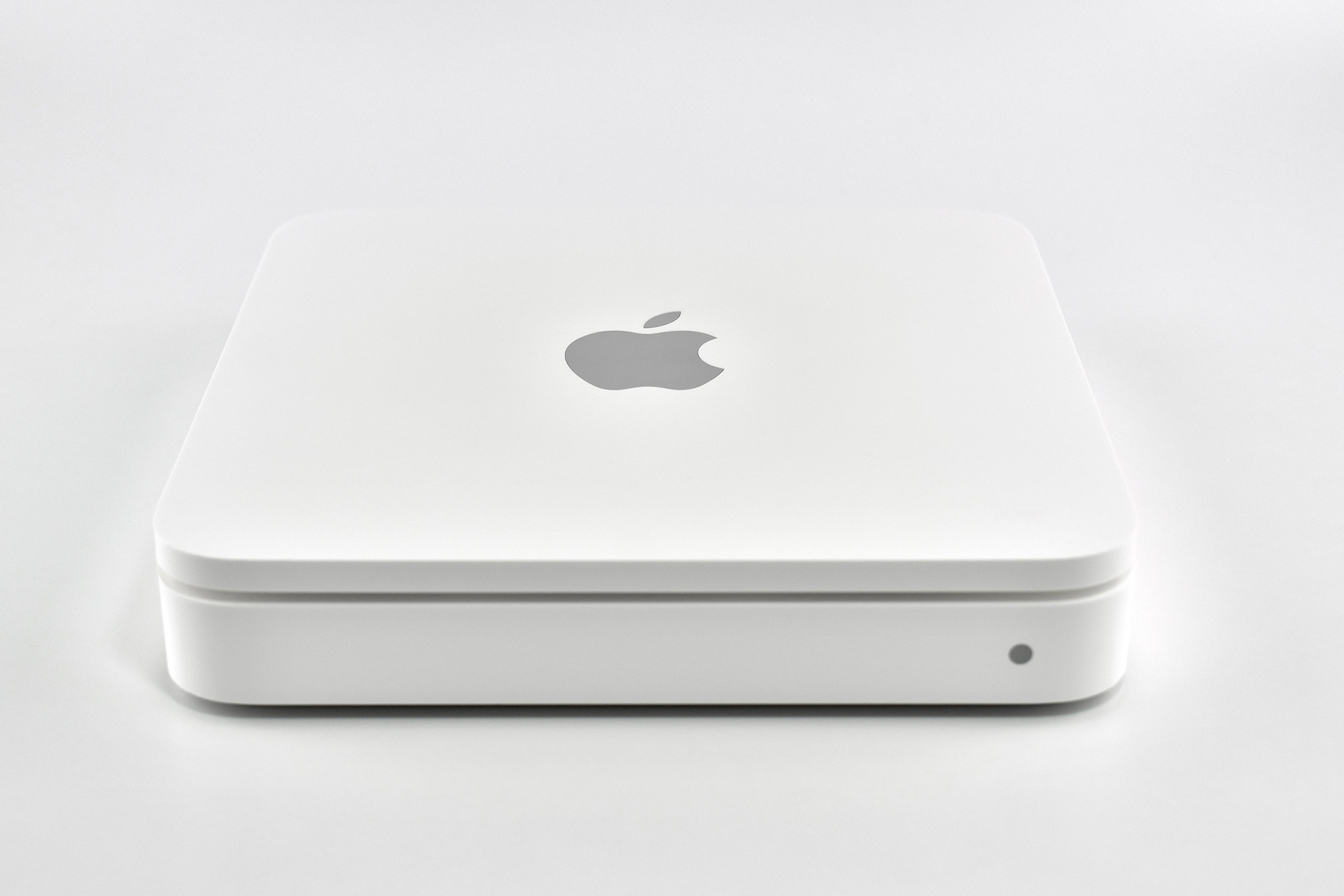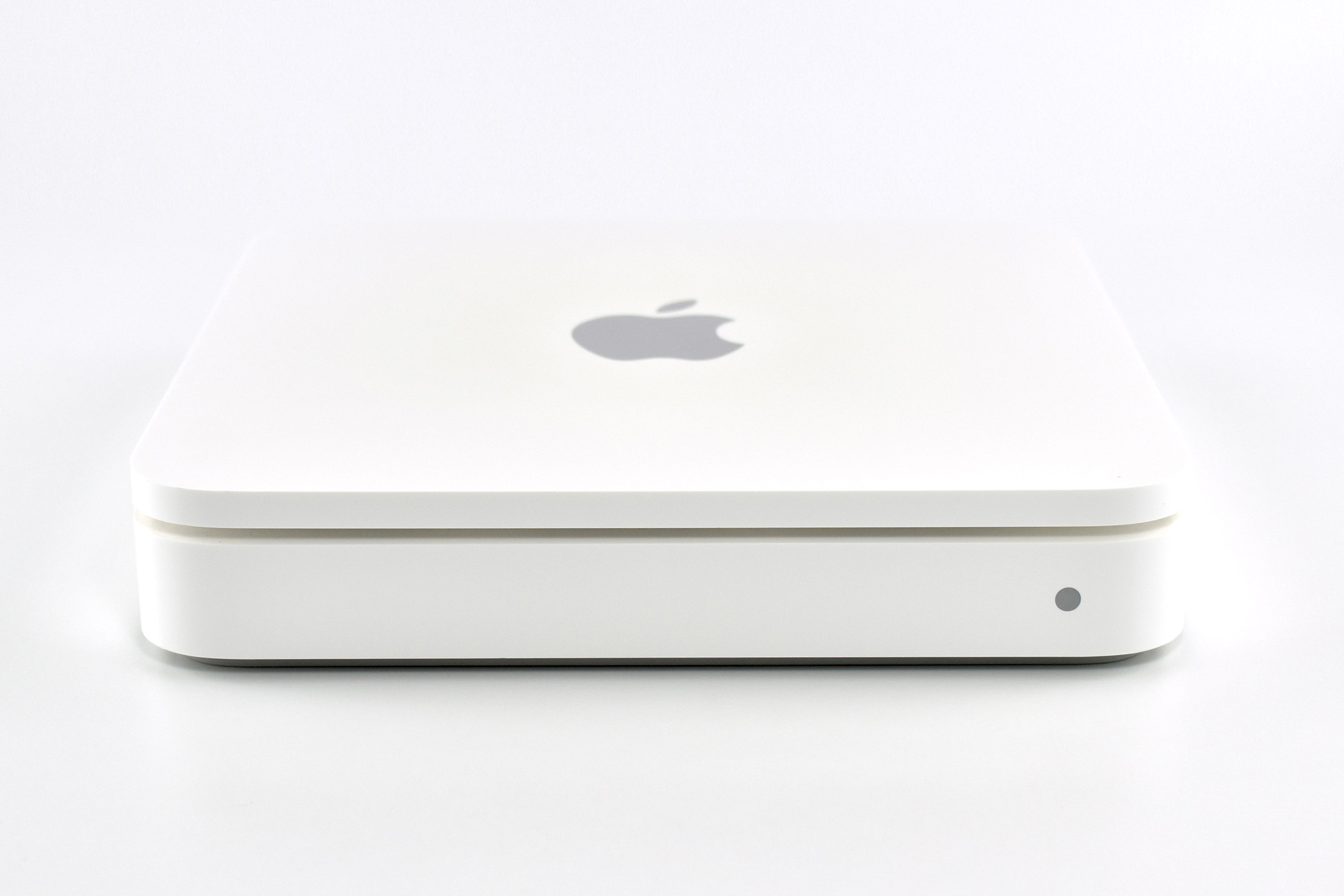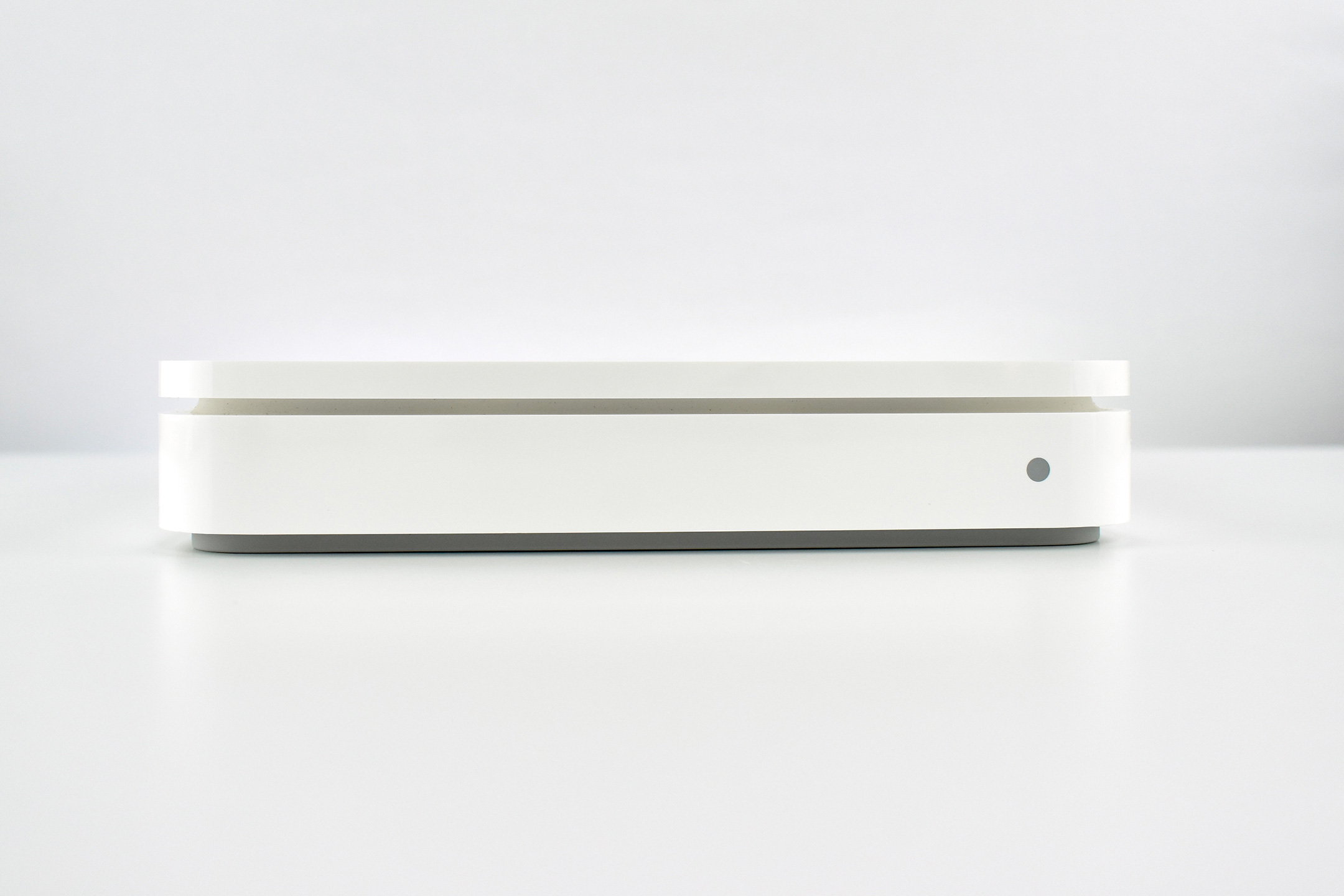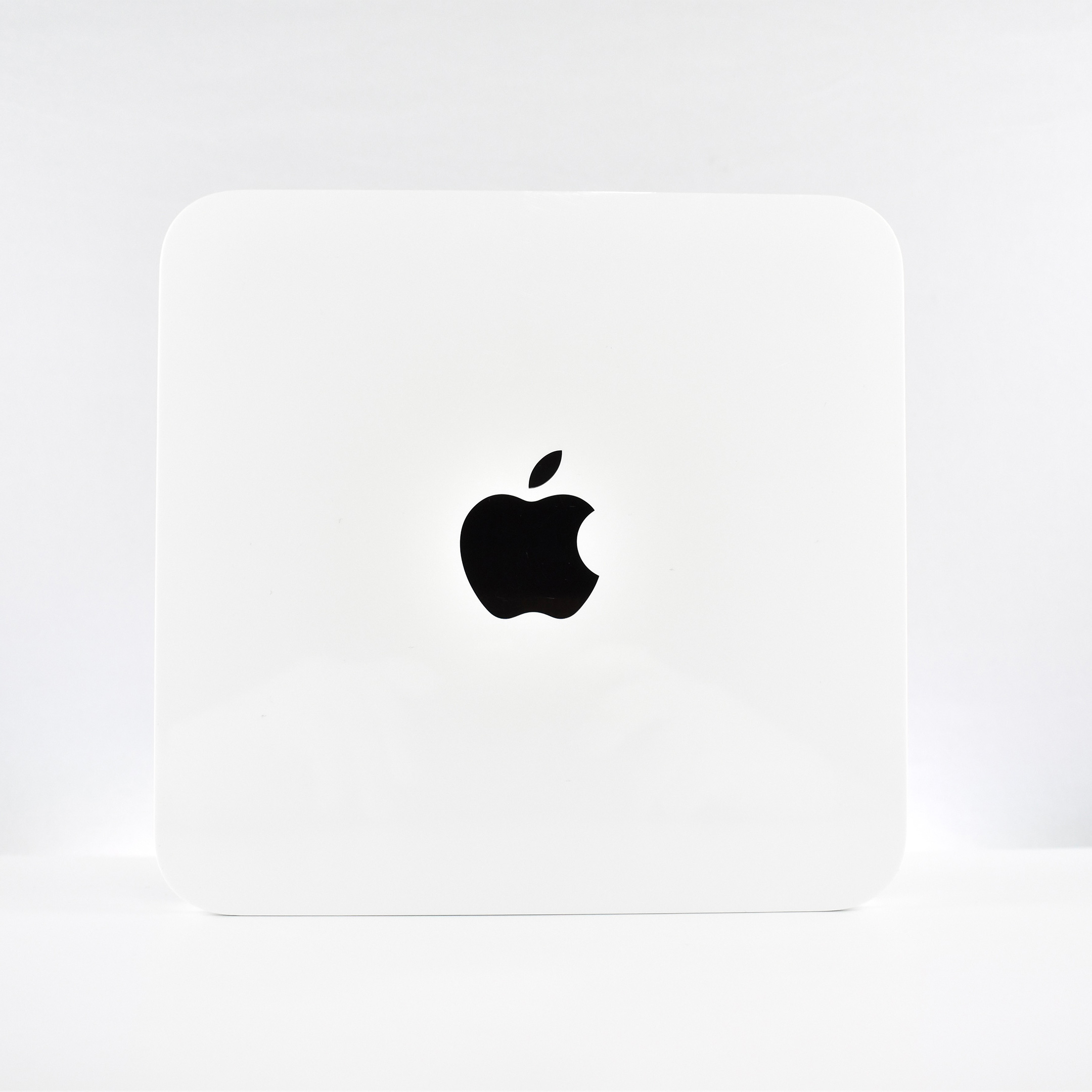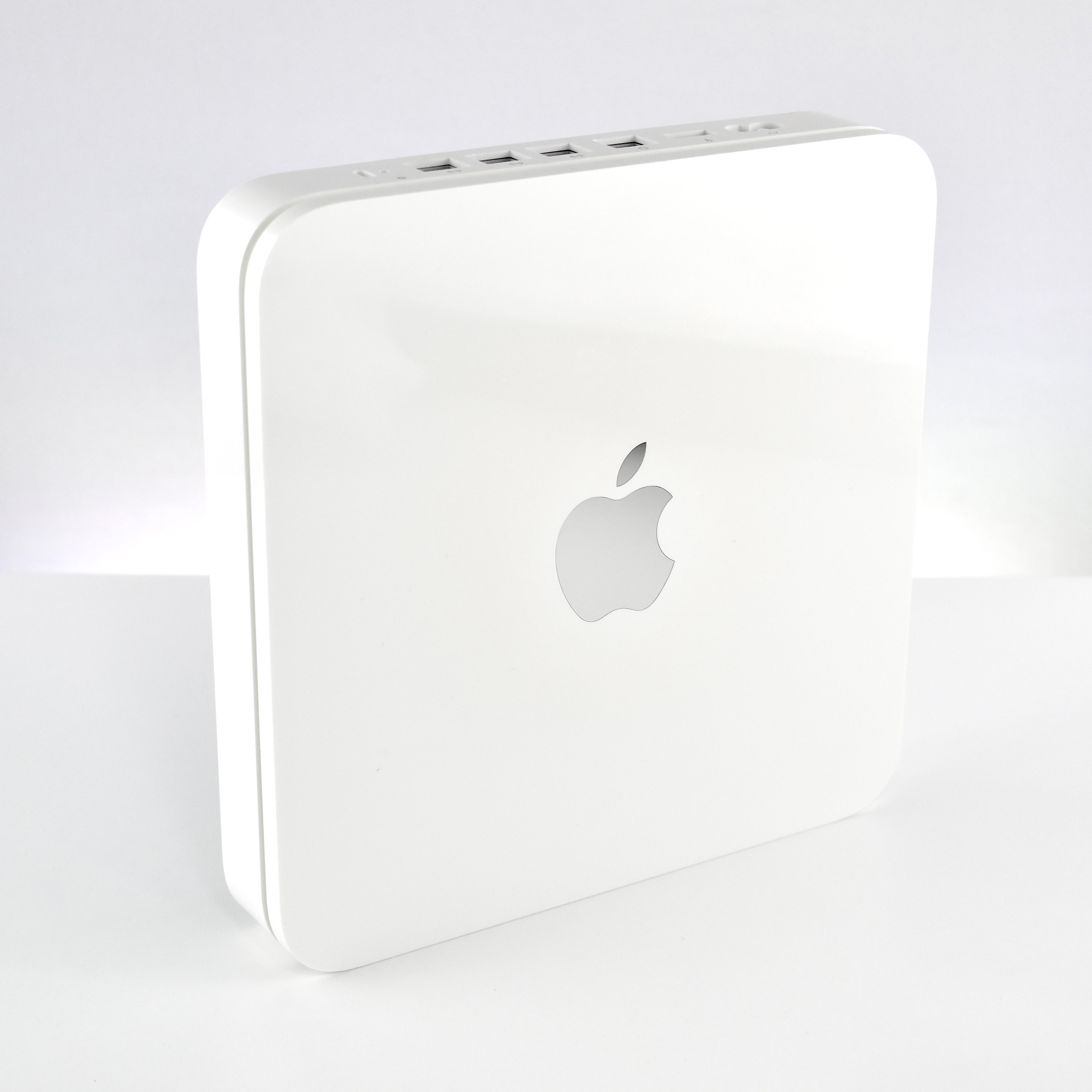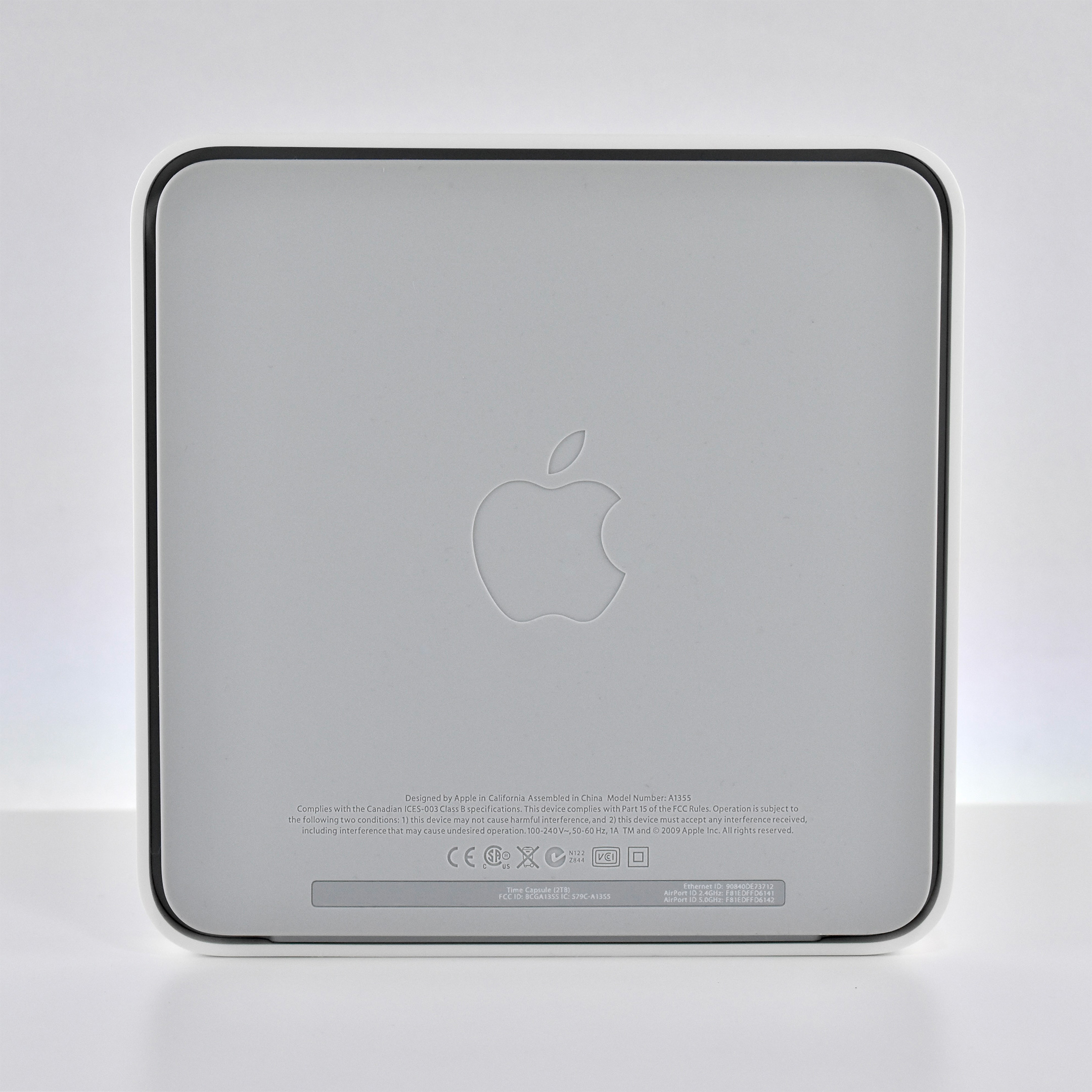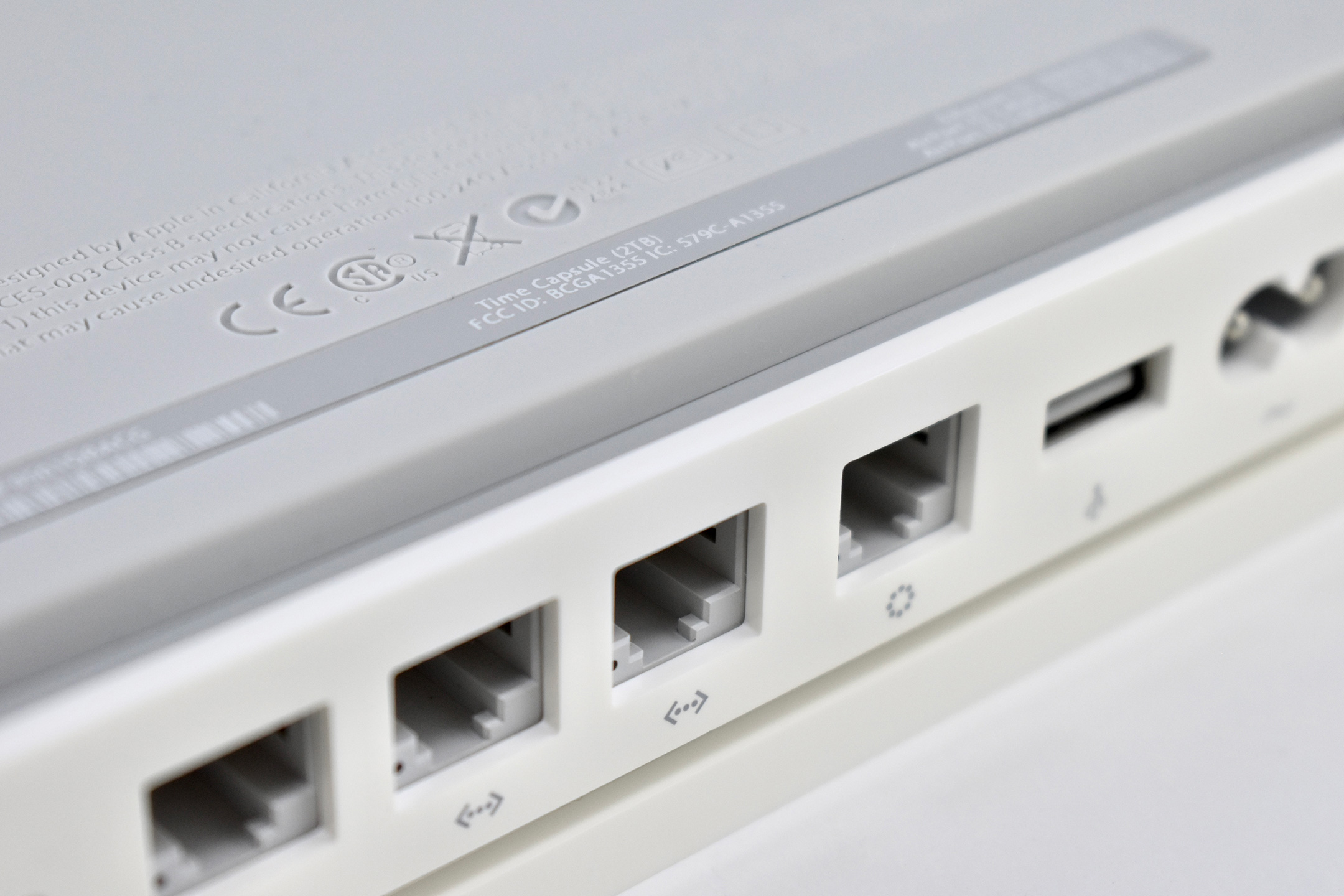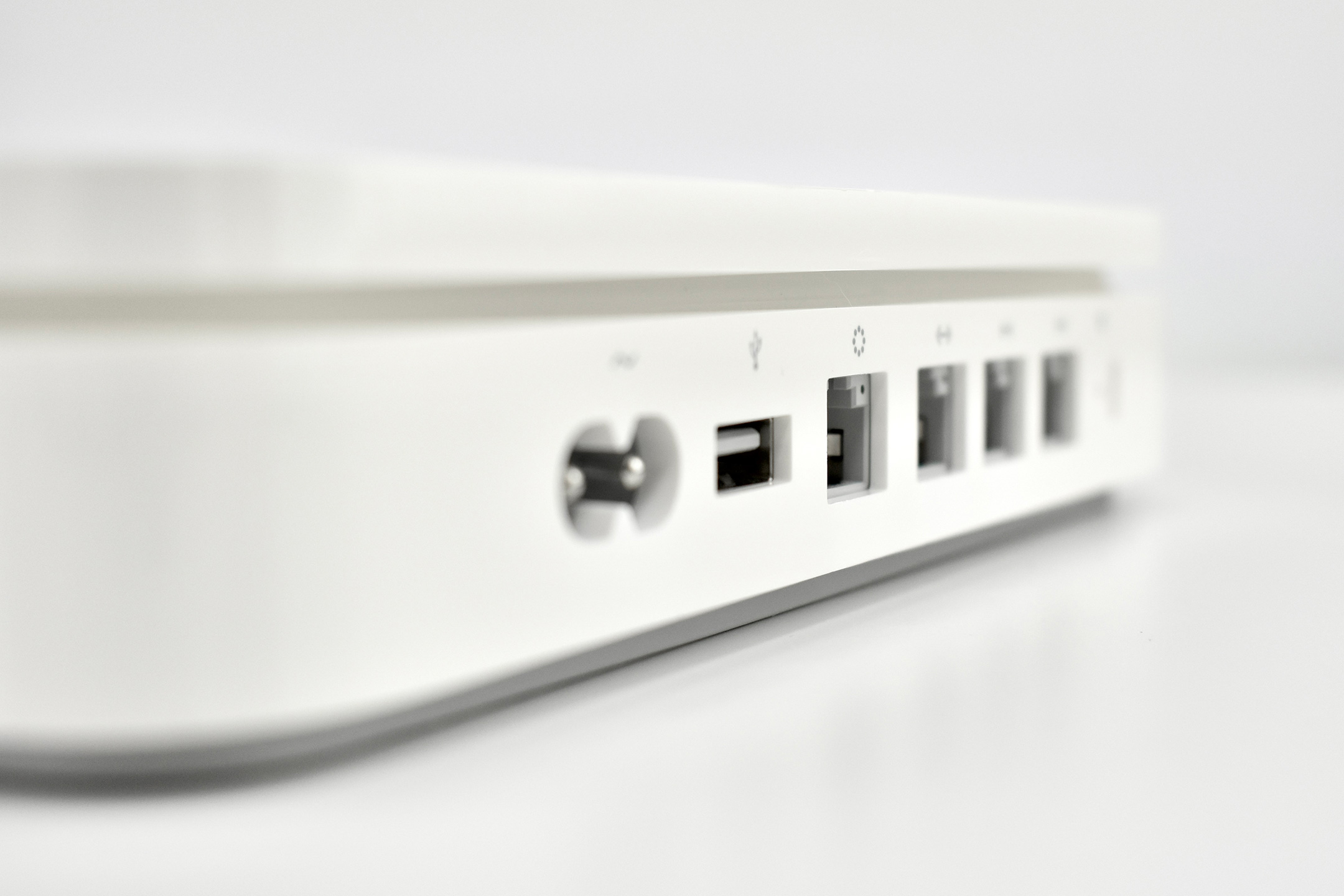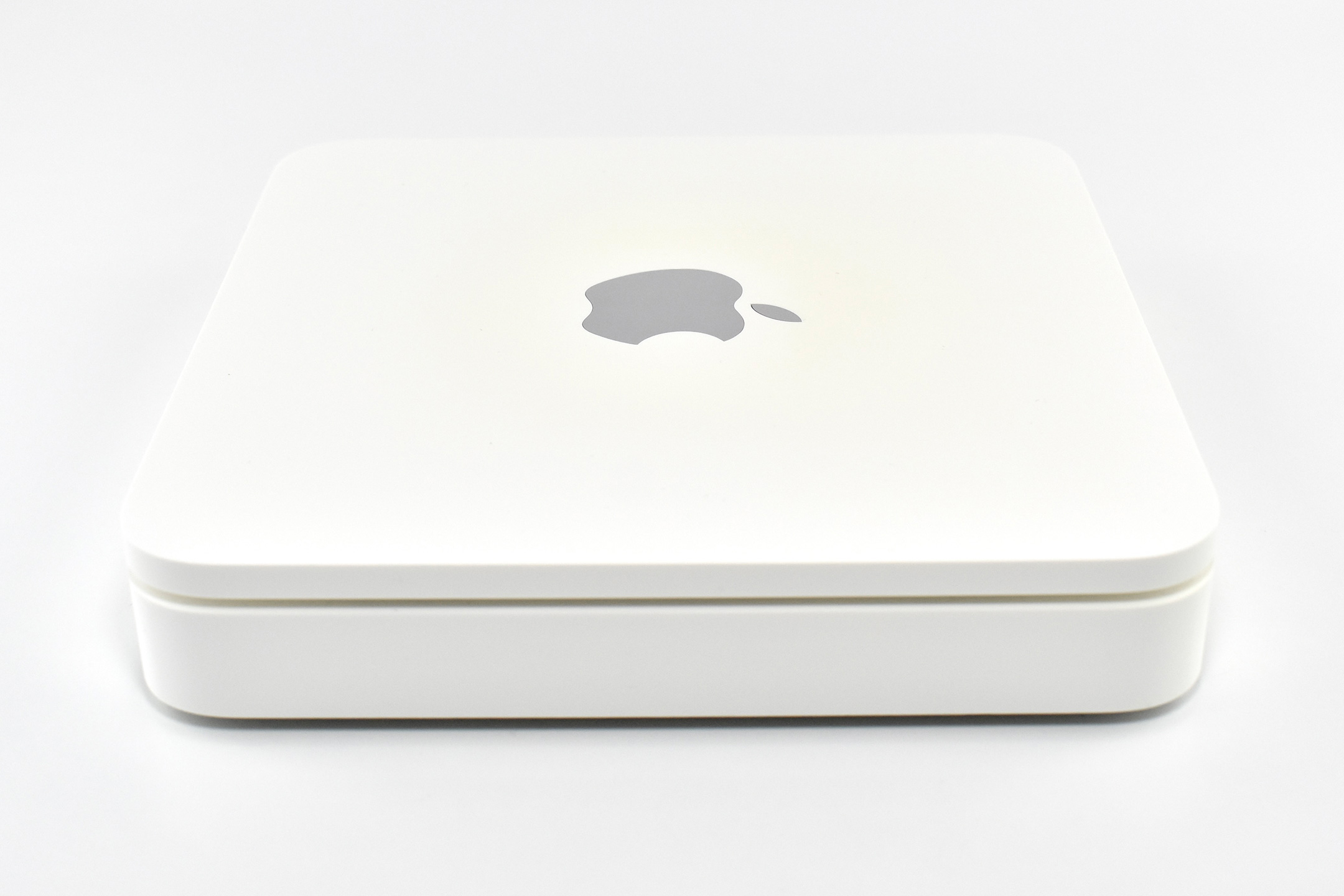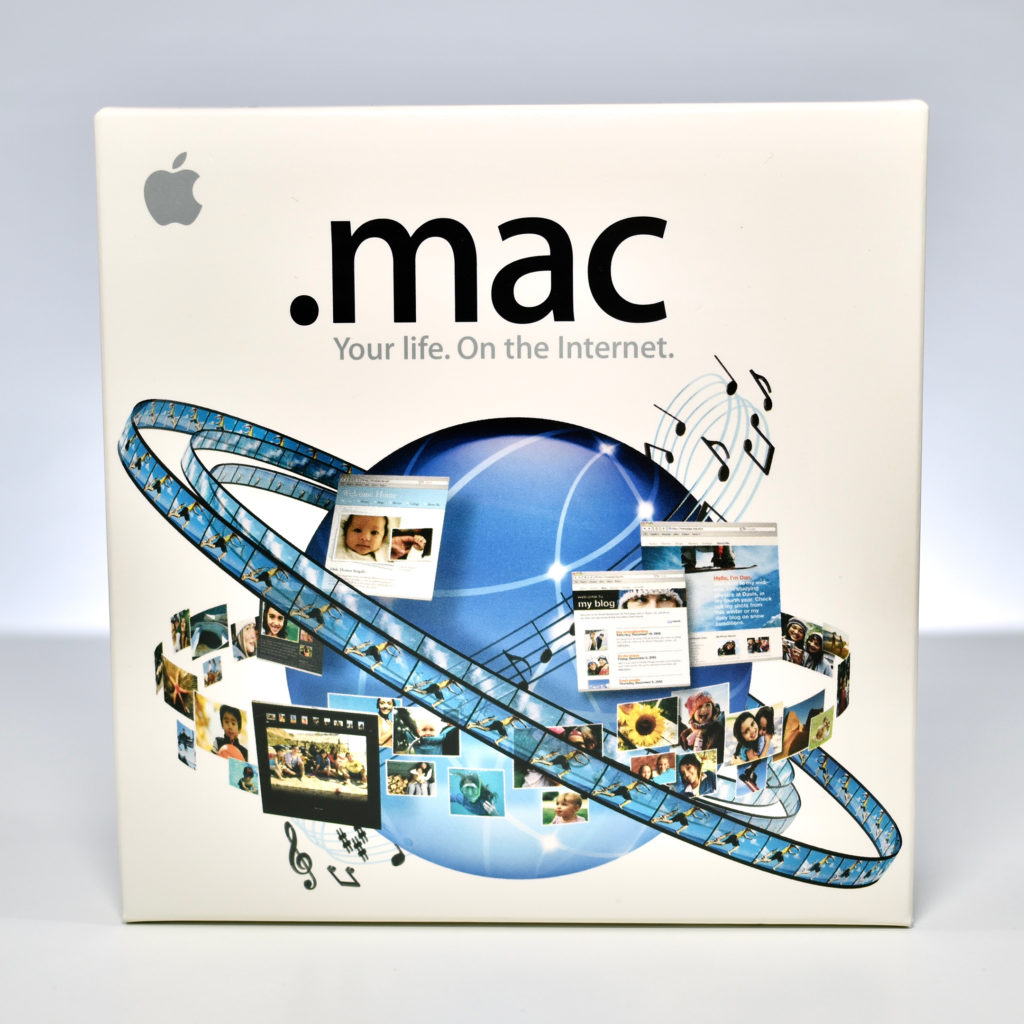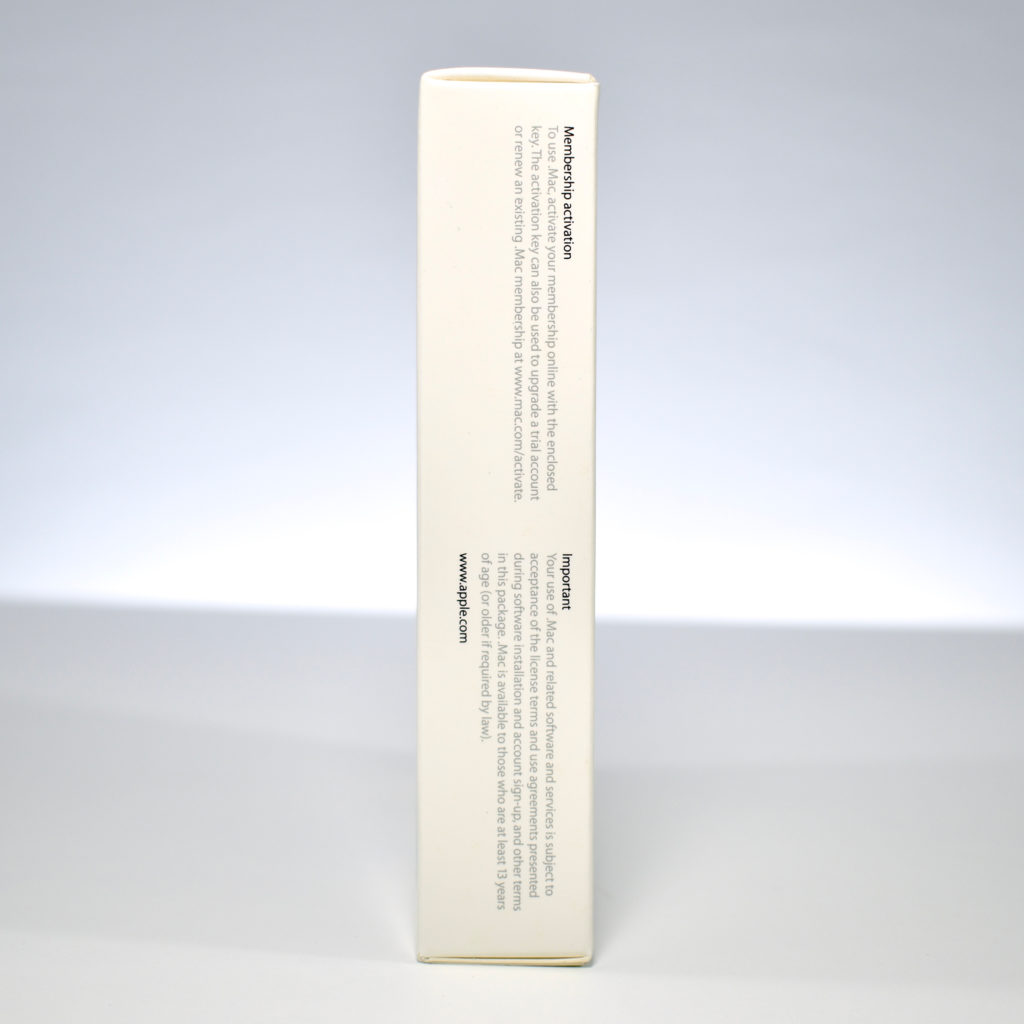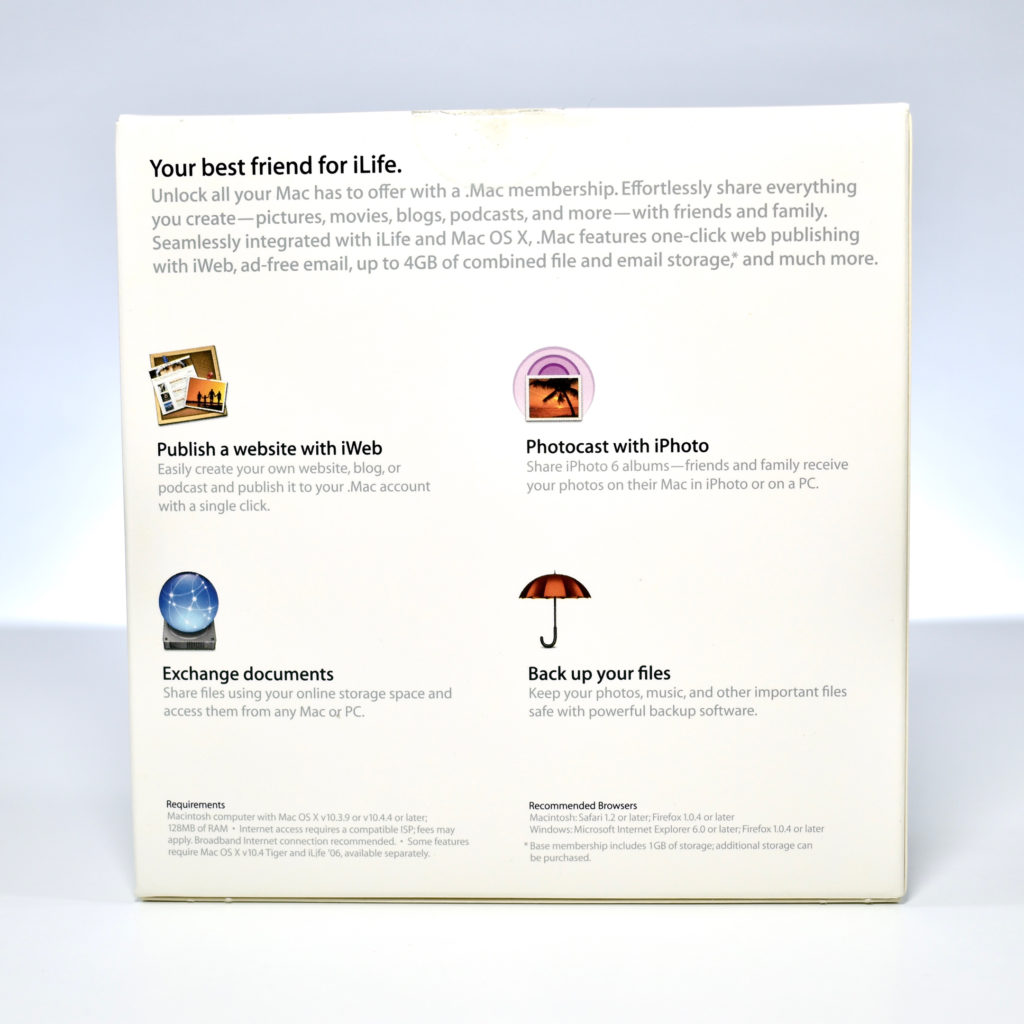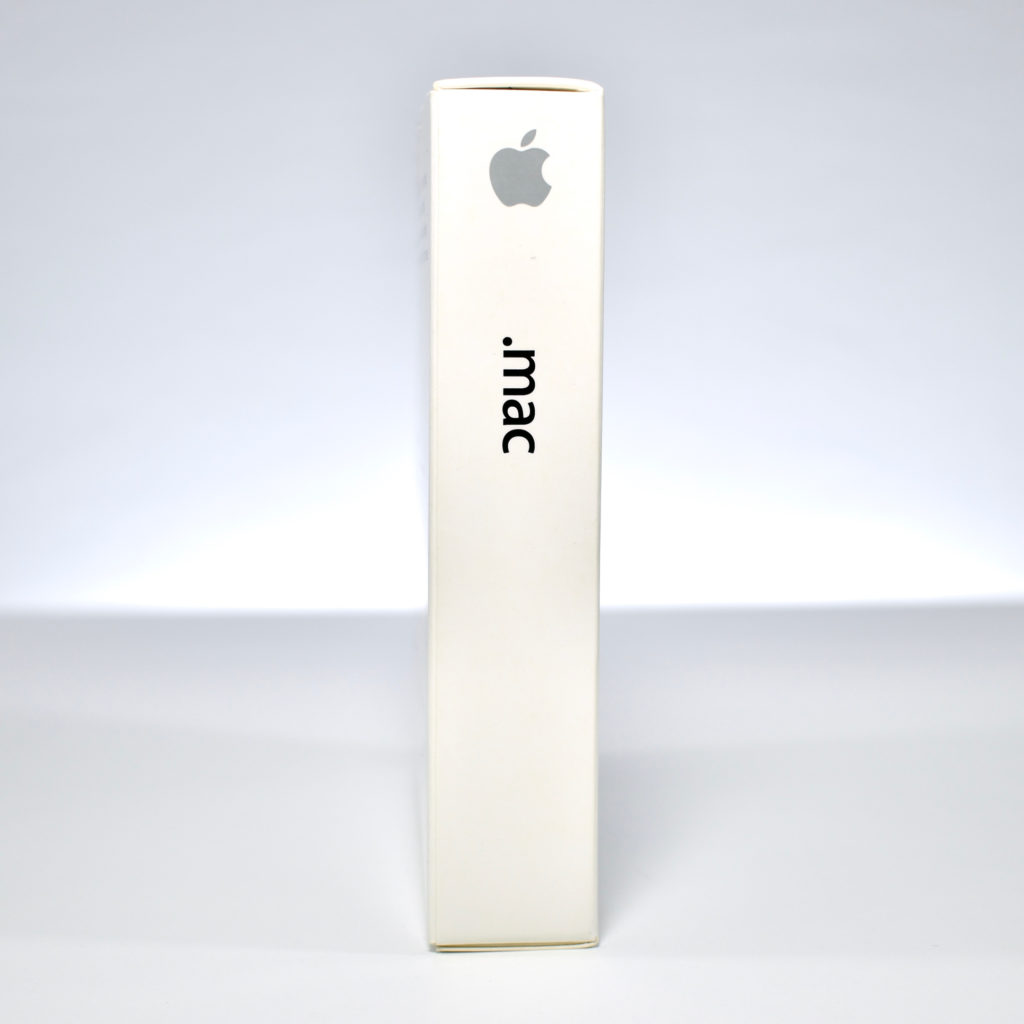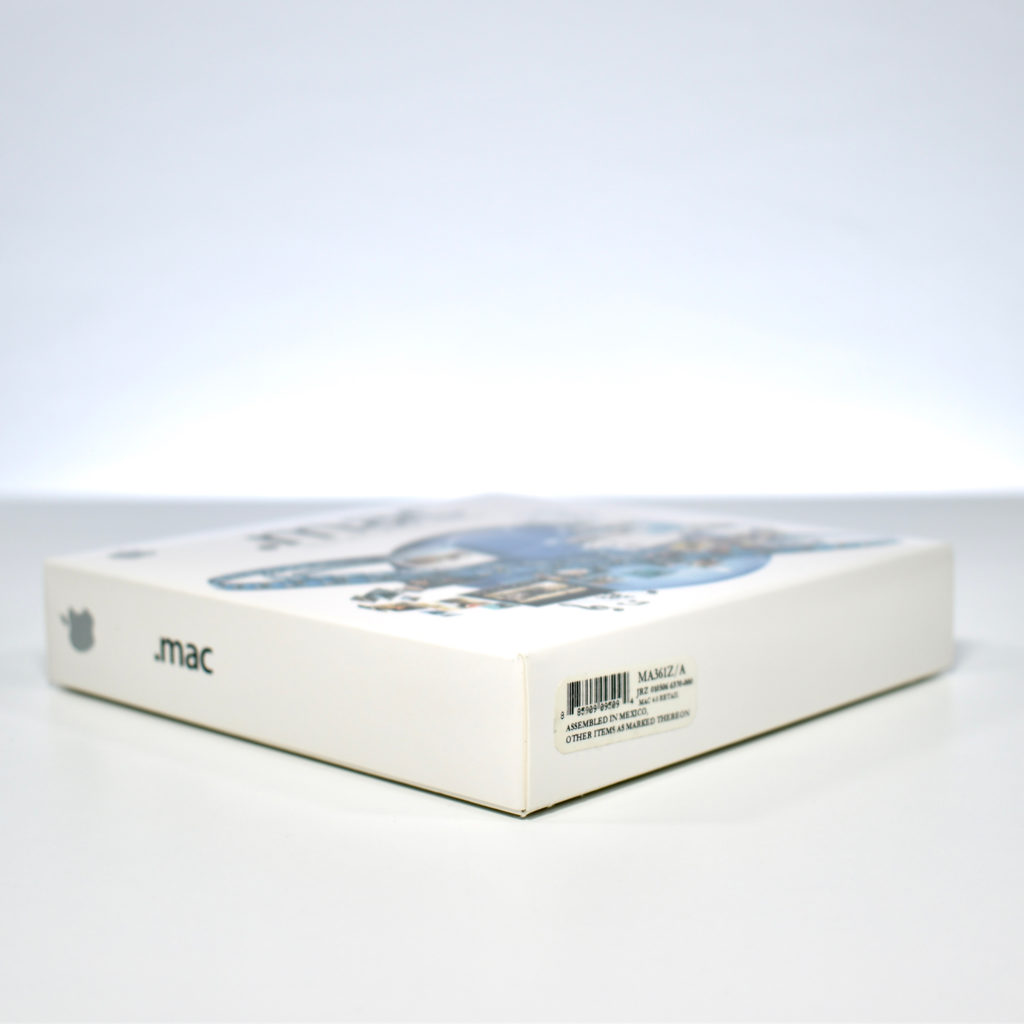The AirPort Time Capsule was a device that combined Apple’s Wi-Fi base station with a built-in hard drive that allowed network-attached storage (NAS). This example (A1355) is the third of five generations of this product released between 2008 and 2013. Apple described this product as a “Backup Appliance” that was designed to work with its Time Machine software that was released with Mac OS X 10.5.
Using the Time Machine software, Time Capsule creates backups of the operating system and files wirelessly and automatically, thus eliminating the need for an external hard drive. Time Machine made hourly backups of the files that were changed and managed older backup images to save space. The initial backup of a computer using Time Machine could take several hours (or overnight) on an 802.11n wireless network, but subsequent hourly backups occurred instantly and far more quickly (depending on file sizes).
This Generation 3 model used the same design as Generations 1–4: 7.7 inches square and 1.4 inches tall. The Generation 3 included the following interfaces:
- One Gigabit Ethernet WAN port for connecting a DSL or cable modem
- Three Gigabit Ethernet LAN ports for connecting computers or network devices
- USB port for connecting a USB printer or USB external hard drive
- 802.11n wireless
Time Capsule used a Hitachi Deskstar hard drive, the same hard drive sold with Apple’s Xserve server products. The Hitachi Deskstar met or exceeded 1 million hours mean time between failures (MTBF) status, common for server-grade hard drives.
